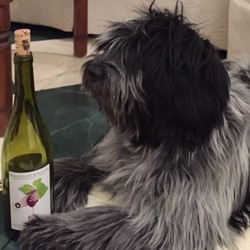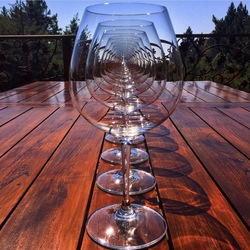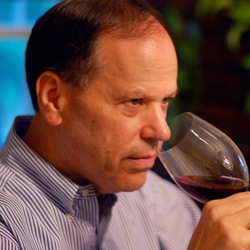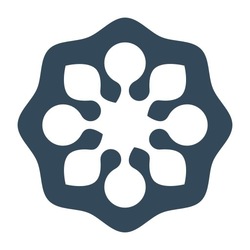Crux Fermentation Project
Elouan
Oregon Chardonnay 2017
Wagner family project now owned and run by Joe Wagner. Sunshine yellow with aromas of green fruits and nutty notes. Barrel fermented in French oak (50% new) for 14 months with full malolactic fermentation. On the palate flavors of stone fruits and citrus notes with a creamy texture. Good balance, medium length ending with a honey character. Good value. — 6 years ago
Château Lynch-Bages
Grand Cru Classé Pauillac Cabernet Sauvignon Blend 2000
The 2000 is delicious but, it is evolving at a glacial pace. Out of magnum.
On the nose, touch of barnyard, glycerin, ripe; blackberries, dark cherries, black raspberries, plum, strawberries & cherries. Vanilla, dry clay, limestone, river stones, just a touch of pyrazines & bandaid, dark,,turned, moist earth, dry grass and dry & fresh dark florals.
The body is full, round & sexy. Dry softened, sweet tannins. ripe; blackberries, dark cherries, black raspberries, plum, strawberries & cherries. Vanilla, dry clay, limestone, river stones, just a touch of pyrazines & bandaid, fresh tobacco leaf, saddle-wood, dry underbrush, dark, turned, moist earth, dry grass and dry & fresh dark florals. The acidity is magnificent. The structure, tension, length and balance are sensational. The finish is drop dead gorgeous. I’d still hold mine another 5 years as long as you have 3-4 bottles for more 5 year increments.
Photos of, their Estate vines, Clyde Beffa-Owner of K&L Wine Merchants, Owner of Chateau Lynch Bages - Jean-Michel Cazes, guests of the dinner and a sunset view from their Estate.
Producer notes and history...Lynch Bages takes its name from the local area where the Chateau is located in Bages. The vineyard of what was to become Lynch Bages was established and then expanded by the Dejean family who sold it in 1728 to Pierre Drouillard.
In 1749, Drouillard bequeathed the estate to his daughter Elizabeth, the wife of Thomas Lynch. This is how the estate came to belong to the Lynch family, where it remained for seventy-five years and received the name Lynch Bages. However, it was not always known under that name.
For a while the wines were sold under the name of Jurine Bages. In fact, when the estate was Classified in the 1855 Classification of the Medoc, the wines were selling under the name of Chateau Jurine Bages. That is because the property was owned at the time by a Swiss wine merchant, Sebastien Jurine.
In 1862, the property was sold to the Cayrou brothers who restored the estate’s name to Chateau Lynch family.
Around 1870, Lou Janou Cazes and his wife Angelique were living in Pauillac, close to Chateau Pichon Longueville Baron. It was here that Jean-Charles Cazes, the couple’s second son, was born in 1877.
In the 1930’s, Jean-Charles Cazes, who was already in charge of Les-Ormes-de-Pez in St. Estephe agreed to lease the vines of Lynch Bages. By that time, the Cazes family had history in Bordeaux dating back to the second half of the nineteenth century.
This agreement to take over Lynch Bages was good for both the owner and Jean Charles Cazes. Because, the vineyards had become dilapidated and were in need of expensive replanting, which was too expensive for the owner. However, for Cazes, this represented an opportunity, as he had the time, and the ability to manage Lynch Bages, but he lacked the funds to buy the vineyard.
Jean-Charles Cazes eventually purchased both properties on the eve of the Second World War. Lynch Bages and Les-Ormes-de-Pez have been run by the Cazes family ever since. In 1988, the Cazes family added to their holdings in Bordeaux when they purchased an estate in the Graves region, Chateau Villa Bel Air.
Around 1970, they increased their vineyards with the purchase of Haut-Bages Averous and Saussus. By the late 1990’s their holdings had expanded to nearly 100 hectares! Jean-Michel Cazes who had been employed as an engineer in Paris, joined the wine trade in 1973. In a short time, Jean Michel Cazes modernized everything at Lynch Bages.
He installed a new vat room, insulated the buildings, developing new technologies and equipment, built storage cellars, restored the loading areas and wine storehouses over the next fifteen years. During that time period, Jean Michel Cazes was the unofficial ambassador of not just the Left Bank, but all of Bordeaux. Jean Michel Cazes was one of the first Chateau owners to begin promoting their wine in China back in 1986.
Bages became the first wine sent into space, when a French astronaut carried a bottle of 1975 Lynch Bages with him on the joint American/French space flight!
Beginning in 1987, Jean-Michel Cazes joined the team at the insurance company AXA, who wanted to build an investment portfolio of quality vineyards in the Medoc, Pomerol, Sauternes, Portugal and Hungary.
Jean-Michel Cazes was named the director of the wine division and all the estates including of course, the neighboring, Second Growth, Chateau Pichon Baron.
June 1989 marked the inauguration of the new wine making facilities at Lynch Bages, which was on of their best vintages. 1989 also marked the debut of the Cordeillan- hotel and restaurant where Sofia and I had one of our best dinners ever. A few years after that, the Village de Bages with its shops was born.
The following year, in 1990, the estate began making white wine, Blanc de Lynch Bages. In 2001, the Cazes family company bought vineyards in the Rhone Valley in the Languedoc appellation, as well as in Australia and Portugal. They added to their holdings a few years later when they purchased a vineyard in Chateauneuf du Pape.
In 2006, Jean-Charles Cazes took over as the managing director of Chateau Lynch Bages. Jean-Michel Cazes continues to lead the wine and tourism division of the family’s activities. Due to their constant promotion in the Asian market, Chateau Lynch Bages remains one of the strongest brands in the Asian market, especially in China.
In 2017, Chateau Lynch Bages began a massive renovation and modernization, focusing on their wine making, and technical facilities. The project, headed by the noted architects Chien Chung Pei and Li Chung Pei, the sons of the famous architect that designed the glass pyramid for the Louvre in Paris as well as several other important buildings.
The project will be completed in 2019. This includes a new grape, reception center, gravity flow wine cellar and the vat rooms, which will house at least, 80 stainless steel vats in various sizes allowing for parcel by parcel vinification.
The new cellars will feature a glass roof, terraces with 360 degree views and completely modernized reception areas and offices. They are not seeing visitors until it’s completion.
In March, 2017, they purchased Chateau Haut Batailley from Françoise Des Brest Borie giving the Cazes family over 120 hectares of vines in Pauillac!
The 100 hectare vineyard of Lynch Bages is planted to 75% Cabernet Sauvignon, 17% Merlot, 6% Cabernet Franc and 2% Petit Verdot. The vineyard has a terroir of gravel, chalk and sand soils.
The vineyard can be divided into two main sections, with a large portion of the vines being planted close to the Chateau on the Bages plateau. At their peak, the vineyard reaches an elevation of 20 meters. The other section of the vineyard lies further north, with its key terroir placed on the Monferan plateau.
They also own vines in the far southwest of the appellation, next Chateau Pichon Lalande, on the St. Julien border, which can be used in the Grand Vin. The vineyard can be split into four main blocks, which can be further subdivided into 140 separate parcels.
The average age of the vines is about 30 years old. But they have old vines, some of which are close to 90 years old.
The vineyards are planted to a vine density of 9,000 vines per hectare. The average age of the vines is about 30 years old. But they have old vines, some of which are close to 90 years old.
Lynch Bages also six hectares of vine are reserved for the production of the white Bordeaux wine of Chateau Lynch Bages. Those vines are located to the west of the estate. They are planted to 53% Sauvignon Blanc, 32% Semillon and 15% Muscadelle. On average, those vines are about 20 years of age. Lynch Bages Blanc made its debut in 1990.
To produce the wine of Chateau Lynch Bages, vinification takes place 35 stainless steel vats that vary in size. Malolactic fermentation takes place in a combination of 30% French, oak barrels with the remainder taking place in tank.
The wine of Chateau Lynch Bages is aged in an average of 70% new, French oak barrels for between 12 and 15 months. Due to the appellation laws of Pauillac, the wine is sold as a generic AOC Bordeaux Blanc, because Pauillac does not allow for the plantings of white wine grapes.
For the vinification of their white, Bordeaux wine, Blanc de Lynch-Bages is vinified in a combination of 50% new, French oak barrels, 20% in one year old barrels and the remaining 30% is vinified in vats. The wine is aged on its lees for at least six months. The white wine is sold an AOC Bordeaux wine.
The annual production at Lynch Bages is close to 35,000 cases depending on the vintage.
The also make a 2nd wine, which was previously known as Chateau Chateau Haut Bages Averous. However, the estate changed its name to Echo de Lynch Bages beginning with the 2007 vintage. The estate recently added a third wine, Pauillac de Lynch-Bages.
— 7 years ago


Crux Fermentation Process
Impasse Saison Ale
From crux brewery in Bend, OR. Soooo good. — 11 years ago
Terzavia (De Bartoli)
Cuveé Riserva Grillo
A unique and very attracting wine - Fermentation of Grillo grapes with wild yeasts in barrels of 500 l capacity and aging of 12 months on its lees, 30 months aging - it was a project from Renato. - a lovely wine to pair with food 😃👍 — 12 years ago
Scholium Project
FTP Kirschenmann Ranch Pinot Gris 2012
Floral Terranes
Rosemary Farm X Oberle's Florist Still Cider 2018
Very vinous, this one. Completely dry. An excellent cider. Wild apples rasterized. They do not grow these apples, they gather them from disused sites in Long Island. It’s a very cool project, but the cider that comes out of it is better than any I’ve had. I tend not to like cider, but again, this is the most vinous cider I’ve had. This bottle has a light effervescence, which these don’t usually have, usually they’re fermented totally dry and fermentation is complete and still. Could be this had a touch of rs on bottling, but it was totally dry upon opening. A fine effervescence that ends with an iodine note and some tongue coating tannins, some galangal, mint, and cinnamon verum, which are also on the nose, with lemon oil and raw sourdough. Some white cherries and neroli flavors on the tongue, and good acid, lift, and fine tannins that keep you coming back for more. This is excellent cider, full stop. Thanks @Erik Longabardi — 5 years ago



Crux Fermentation Project
Gimme Mo Not Just Another IPA
Good stuff. — 7 years ago
Crux Fermentation Project
Cast Out (Formerly Outcast) India Pale Ale
Solid IPA — 8 years ago
Château Cheval Blanc
St. Émilion 1er Grand Cru Classé Red Bordeaux Blend 2001
On the nose, it's pure elegance. Kirsch cherries, ripe blackberries, dark cherries, plums, poached strawberries, raspberries haunt the background, vanilla, very light and soft spice, candied moist black earth, fresh violets and liquid, fresh, slightly perfumed red/dark florals. The full body is smooth, sexy and silky elegance. The tannins are round, beautiful and 65-70% resolved. The dark cherries and cherries roll the eyes back in the head. OMG! The fruits are simply garden of Eden beautiful. Poached strawberries, creamy black and regular raspberries, ripe black plum, overly extracted pomegranate, dry cranberries, soft, delicate top soil/dry clay, limestone, crushed dry rock powder, dry stones, black cherry cola/licorice, hint of anise, light notes of dry herbs, fresh tobacco leaf, sweet, dark, moist, turned earth, lead pencil shavings, rich, round mouthwatering acidity and a rich, elegant cherry driven finish that doesn't stop and I will not forget. Cheval Blanc is not a classified First Growth but on my palate it qualifies as such. Glorious bottle! I've had the 05 & 10 early. It will certainly out do this 2001 but not today. Photos of; the historical Cheval Blanc; which I prefer. I love the Bordeaux history. The new and modern 20 Million dollar addition. Shots of the cellar...the new concrete and stainless state of the art fermentation tanks. Producer notes and history...The name Cheval Blanc translates into white horse. The Chateau's history in St. Emilion traces back to 1832. It was the year the Ducasse family purchased land from Chateau Figeac. Prior to it being know as Cheval Blanc, the vineyard was better known as Le Barrail de Cailloux, which loosely translates into "barrel of tiny stones." Of course, the inspiration from the terroir's unique gravely soils. The original vines purchased from Figeac became what many people think is the best wine of St. Emilion, Chateau Cheval Blanc. For the most part, I agree with that. Back in 1832, Chateau Figeac was owned by Countess Felicité de Carle-Trajet. At that time, Chateau Figeac had grown to a massive 200 hectare estate; which is huge by St. Emilion standards. It was the Countess who decided to sell portions of their holdings. The breakup of the larger Figeac estate helped create a myriad of new St. Emilion wine making estates; which explains why so many Chateauxs include the word Figeac as part of their name. However, the owners of what was to become Cheval Blanc wanted to establish their own identity that was separate from Figeac. In 1838, the Ducasse family purchased what was to became the majority of Cheval Blanc. Some of the vines were previously part of Figeac. They began buying more St. Emilion vineyard land to create Chateau Cheval Blanc. In 1852, Mille Ducasse married Jean Laussac-Fourcaud, she came with a dowry that included their recently acquired Bordeaux vineyards that included 2 of the 5 gravel mounds running through the vineyards of Cheval Blanc and Figeac. Pretty amazing dowry! The Laussac-Fourcaud family built the chateau that is still in use today. The Laussac-Fourcaud continued to add holdings and increasing the size of the Cheval Blanc vineyards. By 1871, they accumulated a total of 41 hectares of vineyards in Saint Emilion. Chateau Cheval Blanc remains that same size to this day. A number of years ago, Cheval Blanc spent a boat load of money on updating and renovating to a modern facility in a true modern fashion that drastically departed from its original existing historical structure. Cheval Blanc has always tried to be innovative. Around 1860, when the chateau for Cheval Blanc was being built, extensive work was also being done in the vineyards. In fact, even then, Chateau Cheval Blanc was at the forefront of vineyard management techniques when they added a vast network of drains in their vineyards. Chateau Cheval Blanc was probably the first estate in the Right Bank to install this type of drainage system. At first, Chateau Cheval Blanc sold their wine under the Figeac label. Once Chateau Cheval Blanc began winning medals for the quality in their wine, they changed their label. That change included placing pictures of their medals on the label, which is still featured on their label today. More importantly, the wines were now sold under the name of Chateau Cheval Blanc. Cheval Blanc continued gaining in popularity by producing some of the best wines in all of Bordeaux during the 1920’s, 1940’s and 1950’s. In 1998 Cheval Blanc was purchased by Bernard Arnault and Baron Albert Frere for a 135 million Euros. They asked Pierre Lurton to manage the property for them. Today, Pierre Lurton also manages their other estates, Chateau d’Yquem, Chateau La Tour du Pin and Quinault l’Enclos. 1991 was one of the most difficult vintages in Bordeaux history, Cheval Blanc did not produce a wine. #RESPECT! In 2009, LVMH purchased the shares owned by Bernard Arnault in a private transaction. There was no official announcement of the price. However, rumors placed the price at close to 15 Million Euros per hectare (€615,000,000), making this the most expensive transaction yet, on a per hectare purchase price in the history of Bordeaux. 2000, 2005, 2009 & 2010 were near perfect or perfect vintages for Cheval Blanc and again in 2015, they produced candidates for wine of the vintage. In that same year at an auction held by Christie’s, a scarce, six-liter bottle of the legendary 1947 Cheval Blanc, (Probably the only real bottle in existence) sold for a record setting price of $304,375 dollars! In 2011, with the help of famed architect and Pritzker Architecture Prize winner, Christian de Portzamparc, Chateau Cheval Blanc completed a major construction and renovation project. This remodeling included; building a new winery, barrel cellars, vinification room, tasting area and efforts with the landscaped gardens. Even though the structure is modern in design (sigh), this new cellar cost over $20,000,000. The 39 hectare vineyard of Cheval Blanc has a complex terroir that consists of 3 different soils. Even though the vineyards are in one large parcel, this can be divided up as follows: 40% of their soils are gravel over multiple types of clay, including blue clay. Another 40% of their terroir has deep gravel soils, while the remaining 20% of their soils consists of sandy clay in the soil. The vineyard of Chateau Cheval Blanc is planted to 49% Cabernet Franc, 47% Merlot, and 4% Cabernet Sauvignon today, but the goal is to return to the original mix of 55% Cabernet Franc, 40% Merlot and 5% Cabernet Sauvignon. The vines at Cheval Blanc are old, averaging 45 years of age. They have 8 hectares of Cabernet Franc planted in the 1950’s. However, some of the older parcels of Cabernet Franc are close to 100 years of age, as they were planted in 1920. Cheval Blanc vinification takes place in 52 different temperature controlled, cement vats that vary in size, due to the needs of specific parcels to allow for each parcel being vinified in its own tank. Malolactic Fermentation takes place in tank. The wines are aged in 100% new, French oak barrels for close to 18 months before bottling. @ FL Yountville — 8 years ago


Ex Post Facto
Santa Barbara County Syrah 2016
The 2016 Syrah is a very pretty wine from Greg Brewer's Ex Post Facto project. Racy and perfumed in the glass, with striking aromatic presence, the 2016 makes a strong opening statement. The red and purplish berry fruit is nicely lifted by floral and savory overtones from the whole clusters. It will be interesting to see where this wine goes in the future. Certainly the debut vintage is promising. Brewer gave the fruit, from Spear, 4-5 days of cold soak followed by a lengthy fermentation/maceration of 45 days or so. The 2016 spent 16 months in neutral French oak. (Antonio Galloni, Vinous, September 2018) — 7 years ago
Scholium Project
Glos McDowell Vineyards Sauvignon Blanc 2007
Named Anastasis for its “resurrection” in the cellar after fermentation issues. From low-yielding Sauv Blanc vines near Rutherford that were pulled after the 2013 vintage. Sherry notes, with some apple, nut and yellow jujube character. If you go in thinking Jura, you will enjoy this more than if you go in thinking California. Interesting wine. Only about 14 cases, hand bottled by @Graeme MacDonald and @Johanna Jensen according to Abe’s notes. Interesting that I will have consumed about 4% of total production by the time I finish my bottles. — 7 years ago
Scholium Project
MFCH Michael Faraday Michael Mara Vineyard Chardonnay 2012
Salinity and lemon, bit of vanilla, touch of oxidation - and a little of the natural fermentation sourness that some of Abe’s wines for Red Hook have. Very clean. — 8 years ago
Tripod Project
Deep Probe LaGae Vineyard Riesling 2013
Medium golden yellow in color with some orange reflectance. Diesel and linalool in nose. Tart pineapple and lychee notes in mouth with skin astringency on finish, consistent with extended contact on grape skins during fermentation. Also some lactic aftertaste. Three winemakers, good story, better wine with complexity among its various elements. — 8 years ago
Sanguis
My Soul Is Rested Proprietary Red Blend
What a Christmas treat! Co-fermentation project by Mattias (petite sirah with Roussane). Nose of flowers and stewed fruits. Chewy and tannic, melted chocolate, dark fruits - flat out delicious. — 9 years ago
Crux Fermentation Project
Outcast Oregon American IPA
Crux Fermentation Project
Tough Love Banished Series Barrel-Aged Imperial Stout 2014
Crux Fermentation Project 2014 Banished Tough Love Barrel Aged Imperial Stout. Perhaps the best barrel aged stout I've had. More iron fist in a velvet glove than in your face bourbon and stout concoction. Intoxicating nose of vanilla beans, cherries & chocolate. Those flavors carry over in spades to the palate, but no bourbon heat kick on the finish. So well integrated. — 10 years ago
Crux Fermentation Project
Half Hitch Imperial Mosaic IPA
Crux Fermentation Project Half Hitch Imperial Mosaic IPA — 10 years ago
Scholium Project
The Sylphs Guman Vineyard Chardonnay 2002
Wish I'd had this on release in 2005 (after 33 months in barrel, 27 of which was fermentation ) so that I could compare. Probably not for everyone, but all I can say is we love this and treasure each bottle. Chardonnay from Guman Vineyard. Still benefits from air and best on day two. — 11 years ago













Richie Davies
Dont buy it thinking you'll get a sweet drink- the wild fermentation gives it a dryness. Interesting and complex wine — 5 years ago